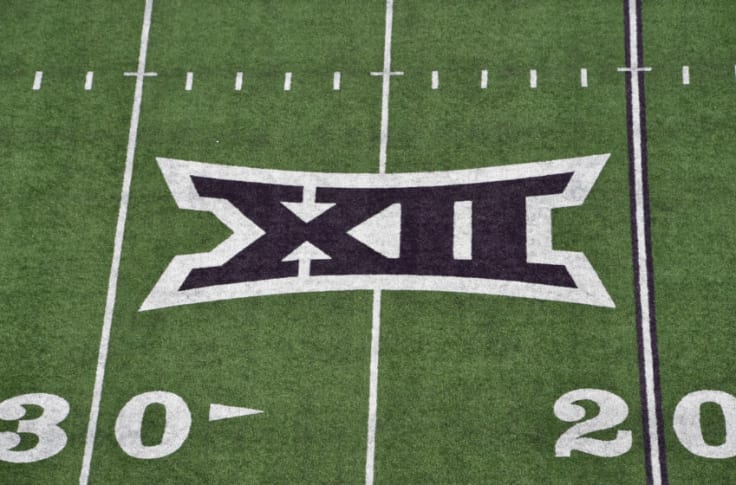
Friday, the University of Houston, the University of Central Florida, the University of Cincinnati, and Brigham Young University were welcomed into the Big XII with open arms by the other eight Big XII institutions. It speaks volumes that the University of Texas and the University of Oklahoma were not even involved in the process. The Longhorns, in particular, had actively opposed the additions of Houston and BYU. They passively limited expansion prospects throughout the Big XII’s existence with their special treatment in having the Longhorn Network instead of a conference network. The revenue-sharing inequity also previously made the Big XII a tough sell.
Many expected the Big XII to crumble without Texas and Oklahoma, and it nearly did. ESPN shamefully attempted to facilitate the league’s destruction by colluding with the American Athletic Conference to absorb several Big XII schools. That would have spared Texas and Oklahoma a large media rights buyout. In an ironic twist, the Big XII instead plucked the meat of the AAC and ensured its survival. Texas Tech Athletics Director Kirby Hocutt spearheaded this effort. He helped organize a scrambling Big XII in a post-Texas/Oklahoma world. After several schools had some brief flirtations with the Pac-12 and the Big Ten, a tenuous “alliance” was formed between the Pac-12, Big Ten, and ACC to effectively opt-out of realignment for now. These actions left the Big XII with little choice but to get aggressive, and the swift addition of four quality universities with strong athletic departments was what the Big XII needed.
Brigham Young University brings a national brand to the table and possesses solid programs in several major sports. Any questions about if they could be competitive in this league were emphatically answered a few years back with consecutive routs of the golden calf, the latter of which occurred in Austin. The conference’s agreement to schedule around Sundays will be mildly inconvenient, especially for multi-day sports such as baseball, the Big XII member institutions’ willingness to do so is a testament to how strongly they felt about including BYU in expansion plans.
The University of Houston has much to gain in the Big XII, and everyone knows it. The area is a hotbed of athletic talent, and one could easily argue that the Cougars deserve better than the conferences they’ve been in since the SWC. Houston has been a force at times in football and presently possesses an elite basketball program. There has been some largely fear-based resistance over the years as to what Houston could do with more exposure and resources, so it is nice to see the new Big XII embrace that possibility. It seems likely that the Cougars will thrive now that they’ll have the chance, and credit to the league for providing this opportunity.
The University of Central Florida is a rapidly rising star in the world of athletics and academics. Although the football program is newer compared to most, it has experienced significant successes. The Knights also sport the largest student body of any school in the country. Many of these passionate Knight fans have already made their presence known on social media, which will add to the fun factor from a competitive standpoint. Much like Houston, simply having a bigger spotlight could do wonders for their programs, as the rest of the tools for success appear to be mostly in place.
Cincinnati needs no football introduction, as they presently sit as a consensus top-ten team. The Bearcats also bring basketball prestige far above either of the two departing Big XII schools. Cincinnati has been a March Madness mainstay. The Bearcats sat high on the list of the best so-called “Group of 5” schools given their continued success across the revenue sports and will thus make for a quality addition to the Big XII. As a bonus, West Virginia won’t be as isolated anymore, and the Big XII will have a footprint in a solid media market that it previously did not.
Each of these schools brings its strengths to the table. The addition of them as a group solidifies the conference into a new era. Everyone involved in this expansion may well find themselves better off in the grand scheme of things. While ESPN and many of the “haves” are furiously efforting to paint any Big XII without Oklahoma and Texas as much lesser than it is, once they leave, this new Big XII will have twelve teams who will all have a say and some mutual interests for once. The SEC has attained much of its reputation via media hype and structures designed to favor it, but the league’s cooperation has also been a huge reason why it has excelled. A Big XII without Texas and Oklahoma get a fresh start without “powers” seeking to bully the rest, and the SEC will now need to adapt to the trust fund baby.
The potential is exciting. The timing of this provides an opportunity to capitalize on streaming platforms as the industry transitions that way. The Big XII should remain strong overall in football, is likely to be elite in basketball, and have a wider reach with new markets in Houston, Orlando, Cincinnati, and nationally. If the league can get the negotiations right and find a quality partner to create a conference network, the sky is the limit. At a minimum, a new dynamic for the league is beyond welcome after decades of tyranny. It remains to be seen how well the Big XII will stand on its own (especially with ESPN outright campaigning against it). It is a wonderful thing that this conference will finally have a chance to grow together and chart its course.



















